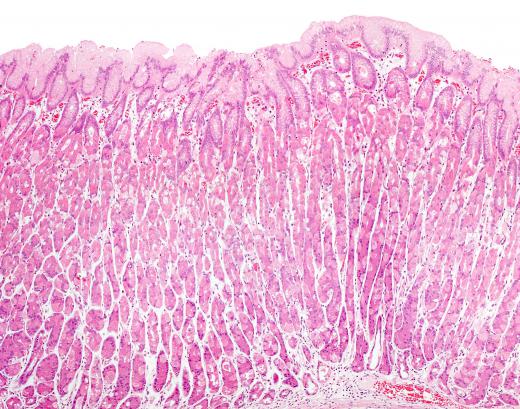What Is a Histamine Receptor?
There are four different types of histamine receptors found in the body. All four are similar in that they are G protein-coupled receptors. Each histamine receptor is found on different types of cells and has different ways of signaling the cells on which it is found.
G protein-coupled receptors are transmembrane receptors, meaning that they traverse the cell membrane. Histamine receptors are stimulated by histamine molecules outside of the cell. When a histamine receptor is activated, it causes a signal to flow into the cell. This signal then causes a specific response by the cell, based on which type of cell is being stimulated.

Histamine is a naturally occurring molecule that is created by all tissues of the body, although it is much more prevalent in some than in others. It is well known for the role it plays in allergic reactions, but it is also important for many normal processes within the body. The histamine receptor is what determines the sensitivity, as well as the response, of the cell to histamine.

The four types of histamine receptors that have been identified are H1, H2, H3 and H4 receptors. These four receptors are one of the reasons why histamine causes such a wide range of symptoms. Each receptor is stimulated by histamine, but causes different reactions within the different cells.
The H1 histamine receptor is found throughout the body. In particular, H1 receptors are located in smooth, or involuntary, muscle cells, the cells lining blood vessels in the heart and the central nervous system. When stimulated, H1 receptors control smooth muscle contraction, as well as dilation of blood vessels. Over stimulation causes an acute allergic reaction.

By comparison, H2 histamine receptors are found predominantly in the parietal cells of the stomach. These cells are responsible for secreting gastric acid when stimulated by histamine. H3 receptors are found within the central nervous system and regulate the release of neurotransmitters in the brain. Lastly, H4 receptors mostly occur in cells of the immune system, including T cells, mast cells and eosinophils. These receptors play a role in how immune responses by the body are regulated.
Antihistamines, or drugs that block the action of histamine, have been developed that counter the activity of H1 and H2 receptors. The antihistamines that block the activity of H1 histamine receptors are commonly used in allergy medications, as well as cold medicines and sleeping aids. The drugs that were developed to block H2 receptors are used to treat acid reflux, as they inhibit the secretion of gastric acid.
AS FEATURED ON:
AS FEATURED ON:













Discuss this Article
Post your comments